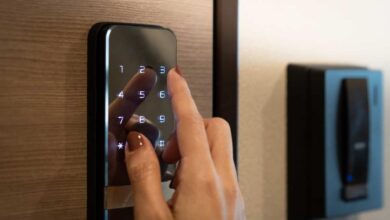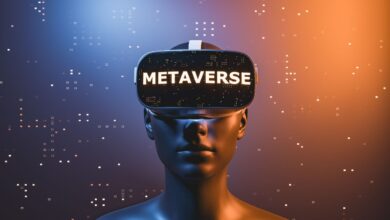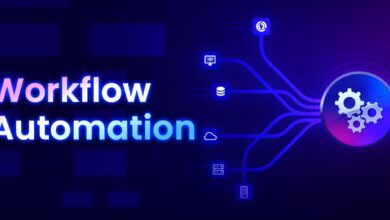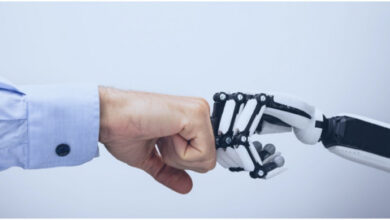Finding Balance: Essential Strategies for Digital Well-being

The pervasive reach of digital technology has woven itself into the very fabric of our lives. From the moment we wake up to the last screen glance before sleep, we are tethered to our devices.
While this connectivity offers undeniable benefits—instant communication, infinite knowledge, and endless entertainment—it comes at a hidden cost: a strain on our mental health, productivity, and real-world relationships.
The concept of a digital detox, once seen as an extreme measure, is now recognized as a vital component of modern self-care. It’s not about rejecting technology entirely, but about establishing a sustainable, mindful relationship with it.
This comprehensive guide explores the necessity of disconnecting, the science behind digital exhaustion, and, most importantly, provides actionable, real solutions for reclaiming your focus and peace.
The Unseen Cost of Perpetual Connectivity

Before diving into solutions, it’s crucial to understand why we need a break in the first place. The problem lies in the relentless demand for our attention and the chemical responses our devices trigger.
A. The Dopamine Treadmill
Our phones and social media apps are expertly designed to be addictive. Every notification, like, or comment provides a hit of dopamine, the brain’s “reward” neurotransmitter. This creates a dopamine loop that constantly drives us to check our devices for the next reward.
- A. Intermittent Reinforcement: Notifications arrive on an unpredictable schedule. This variability is scientifically proven to be more addictive than a fixed schedule, keeping us in a constant state of readiness and anxiety.
- B. Fear of Missing Out (FOMO): The constant stream of curated, often idealized content from others fuels the anxiety that life is happening elsewhere without us. This psychological pressure forces continuous checking.
- C. Habituation: Over time, the brain requires more frequent or intense digital stimulation to feel the same sense of satisfaction, creating a mental treadmill that’s hard to step off.
B. The Cognitive Load and ‘Brain Drain’
The sheer volume of information and notifications we process daily places an enormous cognitive load on our minds, even if we don’t realize it.
- A. Attention Residue: When you switch from one task (like deep work) to checking a notification (like a text message), your focus doesn’t instantly snap back. A small part of your mind—the “attention residue”—remains stuck on the previous task, severely hindering concentration on the current one.
- B. Reduced Executive Function: The constant switching depletes executive function, the set of mental skills that includes flexible thinking, self-control, and focusing attention. This makes complex problem-solving and deep work increasingly difficult.
- C. Impaired Memory Consolidation: Time spent scrolling right before bed stimulates the brain and exposes the eyes to blue light, both of which interfere with the production of melatonin (the sleep hormone). This impairs the quality of sleep, which is when the brain consolidates memories and performs critical restoration.
Strategic Solutions: Redefining Your Relationship with Tech

A true digital detox isn’t a one-off vacation; it’s about implementing sustainable, daily changes. These strategies focus on creating boundaries and replacing digital habits with beneficial real-world activities.
A. Establish Digital-Free Zones and Times
This involves physically or temporally restricting device use in key areas of your life to reclaim focus and connection.
- A. The Bedroom Boundary: Declare the bedroom a tech-free zone. Charge your phone outside the room and use a traditional alarm clock. This is critical for improving sleep hygiene and preventing the “doom scrolling” ritual before bed.
- B. The First and Last Hour Rule: Avoid all non-essential screens for the first hour after waking and the last hour before sleeping. Use this time for reading, journaling, light exercise, or simply being present.
- C. Device Parking: Institute a “parking lot” for devices—a central basket or charging station—when you are home. This makes using them a conscious choice rather than an automatic grab.
- D. Mealtime Mandate: Make family meals or even solo dining a screen-free ritual. This encourages mindful eating and genuine conversation.
B. Taming the Notification Beast
Notifications are the engine of distraction. Taming them is the fastest way to reduce digital interruptions and restore focus.
- A. Default to Silent: Set all non-essential notifications to silent. Most apps do not need the ability to interrupt your day. Only allow notifications for direct, time-sensitive communication (e.g., calls or primary work apps).
- B. Batch Processing: Instead of reacting instantly, schedule specific, short blocks of time (e.g., 15 minutes at noon and 5 PM) to check and respond to email, texts, and social media. This minimizes the attention residue.
- C. Use Grayscale Mode: Experiment with setting your phone screen to grayscale (black and white). Color is one of the most powerful triggers for attention; removing it makes apps significantly less appealing and addictive.
- D. Delete the Temptations: Delete any apps that provide zero value, are purely time-sinks, or are the biggest source of your anxiety (e.g., highly addictive games or social platforms you don’t actually enjoy). Access those platforms only via a less convenient desktop browser.
C. Mindful Consumption and Active Use
Shift your consumption from passive, unconscious scrolling to active, intentional use with a clear purpose.
- A. The Five-Minute Rule: Before opening an app, ask yourself: “What is my goal for the next five minutes?” If the goal is “to kill time,” put the phone down. If the goal is “to look up a recipe” or “to send a specific message,” complete that task and close the app immediately.
- B. Replace Digital with Analog: Actively replace screen time with analog hobbies. This could be painting, playing a musical instrument, gardening, board games, or reading a physical book. The key is to engage in activities that demand your full, non-split attention.
- C. Cultivate Boredom: Allow yourself to be truly bored occasionally. Boredom is the engine of creativity and introspection. If you reach for your phone the second you’re waiting in line or sitting still, you deny your brain the necessary space to wander and generate new ideas.
The Technological Toolkit for Digital Detox
Ironically, technology itself can be a powerful ally in building better digital habits. Modern operating systems and third-party apps offer tools specifically designed for self-regulation.
A. Utilizing Built-in Screen Time Tools
Most smartphones now include comprehensive tools to monitor and limit usage. Using them requires honest assessment and discipline.
- A. Set App Limits: Configure daily time limits for your most distracting apps (e.g., 30 minutes for social media). When the limit is reached, the app locks you out, creating a crucial moment to reconsider your activity.
- B. Focus and Wind Down Modes: Use the phone’s built-in “Focus” or “Do Not Disturb” modes to automate your digital boundaries. Set a “Work Focus” that only allows notifications from work-related contacts or apps, and a “Wind Down” mode that locks the home screen to only essential utilities like meditation apps.
- C. Weekly Reporting Review: Pay attention to the weekly usage reports. Seeing the total hours spent on specific apps quantified in stark numbers is often the most powerful motivation for change.
B. Specialized Third-Party Applications
Several apps are designed to help you focus and maintain productivity by blocking distractions.
- A. Website/App Blockers: Tools like Freedom or Cold Turkey allow you to block specific websites and apps across all your devices for a set period, making it impossible to succumb to temptation.
- B. Gamified Focus Apps: Applications like Forest use gamification—planting a virtual tree that dies if you leave the app—to incentivize staying focused and away from the phone.
- C. Minimalist Launchers: These apps replace your colorful, distracting phone home screen with a minimalist, text-based interface, reducing visual cues that trigger unconscious app opening.
The Social and Relational Detox
Our digital habits don’t just affect us; they profoundly influence the quality of our relationships and social interactions. A crucial part of a detox is restoring the depth of human connection.
A. The Power of Undivided Attention
The simple act of being fully present during conversations is becoming a rarity. Phubbing (phone snubbing) damages trust and respect.
- A. The “Out-of-Sight” Rule: When spending time with friends, family, or partners, put your phone completely out of sight (e.g., in a bag or pocket) on silent, not just face-down on the table. Out of sight truly leads to out of mind.
- B. Practice Active Listening: When someone is speaking to you, practice genuinely active listening—maintaining eye contact, nodding, and synthesizing what they are saying—without the peripheral anxiety of a vibrating phone nearby.
- C. Plan Analog Social Events: Organize gatherings that are inherently incompatible with continuous phone use: a cooking class, a board game night, a hike, or a concert. The activity itself serves as the boundary.
B. Curating the Digital Social Experience
Since social media is a primary driver of digital stress, we must curate our feeds to be sources of joy and information, not anxiety.
- A. Aggressively Unfollow and Mute: Ruthlessly unfollow accounts that make you feel inadequate, angry, or anxious. Mute people whose content you don’t want to see without the awkwardness of unfollowing them. The goal is to make your feed a positive space.
- B. Focus on Real Connections: Use social media primarily to maintain genuine connections with close friends and family, rather than passively consuming content from hundreds of strangers or fleeting acquaintances.
- C. Time-Limited Engagement: Once your scheduled time for social media ends, log out. This simple extra step makes the automatic reflex of reopening the app slightly harder.
Extending the Detox: Mindful Technology Integration
The ultimate goal of a digital detox is not to live in a cave, but to achieve Mindful Technology Integration—where you control the technology, and the technology doesn’t control you. This requires long-term lifestyle changes.
A. The Habit Stacking Approach
Integrate your digital boundaries into existing routines to make them stick. This method, called habit stacking, links a new desired behavior to an established one.
- A. Example 1 (Morning): “After I pour my coffee, I will check my phone for 10 minutes only, and then I will put it away until my work focus block begins.”
- B. Example 2 (Evening): “After I brush my teeth, I will plug my phone into its charging station outside the bedroom, and then I will read a book.”
B. Schedule Digital Blackouts
Plan for periods of the week where technology is off-limits for a longer duration than an hour.
- A. The “Digital Sabbath”: Dedicate one 24-hour period each week—often Saturday or Sunday—to a complete or near-complete digital blackout. This allows your mind to fully rest and reconnect with the physical world.
- B. Unplugging Vacations: If taking a trip, make a conscious decision to leave the laptop at home and severely restrict work email checking. Communicate this boundary clearly to colleagues and family beforehand.
C. The Self-Reflection Loop
Regularly assess how your digital habits impact your mental state and productivity.
- A. Journaling: Spend five minutes each week writing down how your screen time is making you feel (e.g., focused, stressed, calm, anxious). This self-awareness is the most powerful catalyst for permanent change.
- B. The Mood-Check Rule: Before opening an app, pause and identify your current emotion. If you are reaching for your phone out of boredom, loneliness, or anxiety, substitute a non-digital coping mechanism (like breathing exercises or a walk).
Conclusion
The journey toward digital well-being is an ongoing process, not a destination. It is a necessary counter-movement against a world engineered for perpetual distraction.
The Digital Detox is fundamentally about reclaiming your most precious resource: your attention.
We live in the Attention Economy, where companies profit from the minutes we spend staring at their screens. By implementing real, practical solutions—from establishing phone-free zones and ruthlessly curtailing notifications to adopting a mindset of mindful, active technology use—we shift the power dynamic.
We move from being the product to becoming the conscious consumer, dictating when and how technology serves our lives, rather than the other way around.
The benefits extend far beyond simply feeling less stressed. They include a marked increase in deep focus and professional productivity, richer and more meaningful real-world connections, and a significant improvement in sleep quality and overall mental clarity.
The space created by stepping back from the relentless digital stream is where creativity flourishes, emotional reserves are replenished, and true introspection can occur.
This space allows us to hear our own thoughts again, unmuted by the digital noise. Ultimately, mastering the digital detox is about fostering a life where technology is a tool for fulfillment, not a barrier to it. It is about intentionally designing a life that is truly present, connected, and authentically yours.







